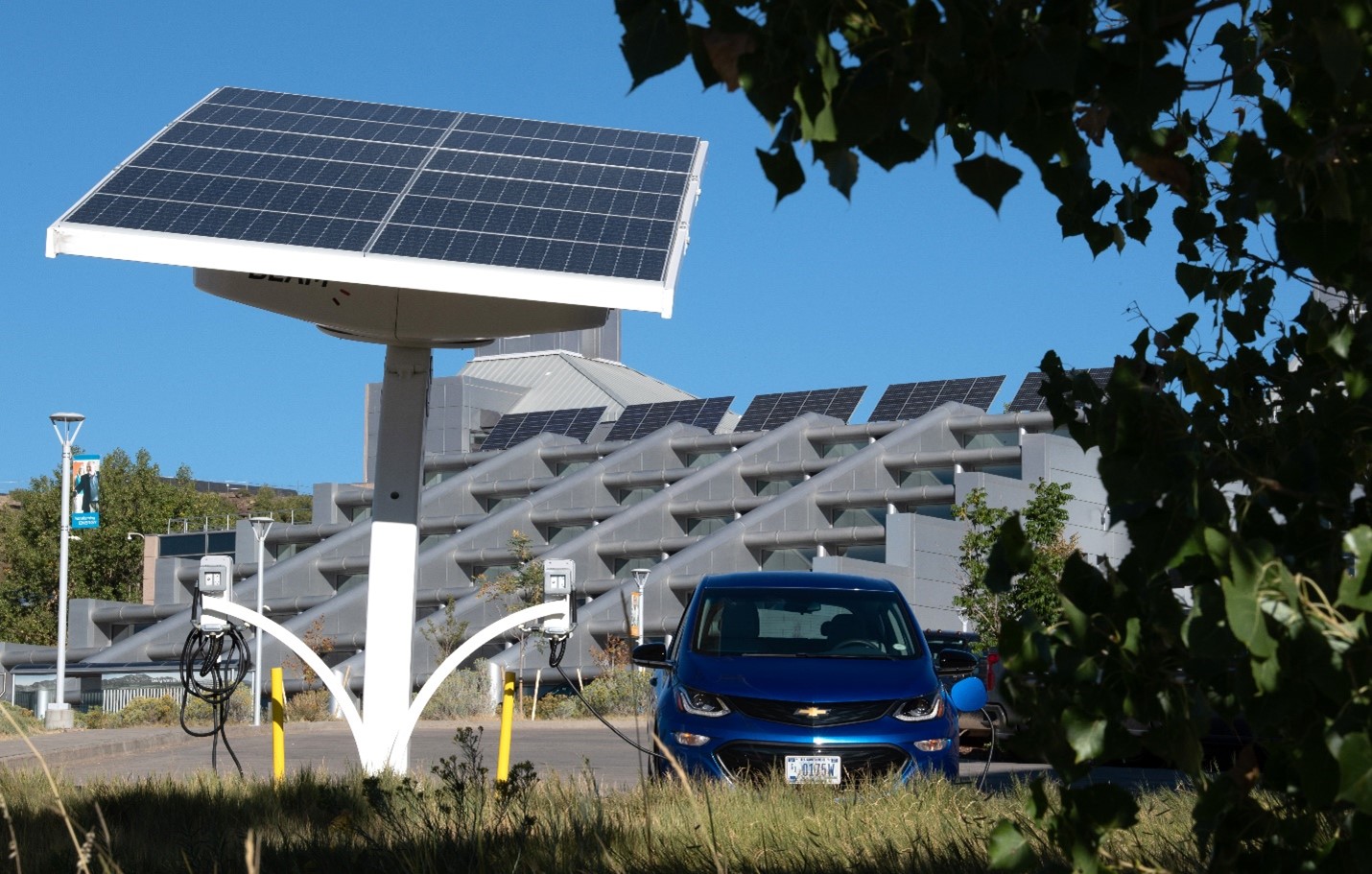Solar + EVs: Two Peas in a Pod

You see them zipping around. You may own one or might even be thinking about buying or leasing one, but I am willing to bet even if none of those are true, you are still interested in electric vehicles (EVs).
A recent study found that solar owners are 66% more likely to own an electric vehicle. Still, EVs are a small fraction of the number of cars on the road today.
While there are more than 5.6 million EVs worldwide, they only account for 2.2% of the global vehicle market share and less than 2% of the vehicle market in the United States.
Ten years from now, the EV market is expected to grow to 4 million vehicles in California alone. This is likely a very conservative estimate, given that Governor Newsom has pledged to ban all sales of new gasoline-powered vehicles in California by 2035.
But what you might not know is that solar and EVs are a lot more alike than you might think. For one, they have a similar growth trajectory. And yes, solar + storage can be used to help meet the demands of an electrified transportation sector, but solar and EVs also have similar policy needs and face many of the same barriers to widespread adoption.
Here are a few ways EVs and solar can work together in the Solar+ Decade.
1. Solar and EVs are Both Market Disruptors and Benefit from Rapid Technology Evolution
While both solar and EVs are fully developed technologies, they’re both challenging longstanding institutions—among them utilities and the auto industry—with an existing customer base, that quite frankly the solar and EV industries would like to tap into.
Despite this market disruption, collaboration is a key component of the Solar+ Decade. There’s room for both automobiles and utilities to embrace these newer technologies and develop new business models that can benefit them both. For example, both fast charging infrastructure and community solar are ripe for collaboration and further innovation.
These innovations will ultimately help to lower prices and improve access to both technologies, enabling more customers to drive EVs and go solar.
2. Solar + EVs Benefit from Grid Modernization
Grid modernization has become a catch-all phrase that refers to the necessary changes for our electricity grid to accommodate the rapid technological changes happening in the generation, transmission and distribution of electric power. This can take a variety of different forms for EVs and solar, but largely translates to how well these technologies can communicate with each other and the grid, which can in turn help grid operators better mange power fluctuations.
3. Competition, Competition, Competition
When it comes to regulatory hurdles, both solar and EVs are advocating for competitive access to the same benefits that well-entrenched industries, like utilities and automobiles enjoy.
For example, both industries want to ensure third-party providers have access to customers. Similar to independent power producers in the solar industry, EV charging companies want to be able to provide their technology to the public, and to ensure that that these robust charging systems are offered by third parties.
Although utilities have an obvious role to play in this market by developing and siting charging stations, both industries want to make sure there is a level playing field for independent power producers and companies to participate in this market.
4. Solar + EVs Can Benefit from Time of Use Rates and Proper Valuation
As the market transitions and EV adoption grows, it will increase electricity load at homes and on the grid, especially in the evening. This could pose a challenge for solar-powered homes if they don’t have energy storage, but it also opens up the opportunity for electric vehicle-to-grid programs. In this model, EVs are compensated for providing energy to the grid, similar to net metering. It will be very important to make sure EVs are fairly compensated for the value they can provide to the grid.
The push and pull of electricity demand can also create a gap in electricity needs, but this can be managed and used to our advantage. One tool is time-of-use rates, which helps to align customer electricity demands with rates that vary based on when the grid needs it. This can help to send price signals for charging at the right times and help us better manage electricity loads.
Time of use rates are increasingly being used across the country and can help ensure that EV charging is happening in a manner that helps to balance out the load profile. In order to adapt to increased electrification, we need to make sure it is done in a smart way to ensure that it doesn’t exacerbate the infamous duck curve phenomenon, where the utility may need to ramp up quickly to meet demand.
As we continue building the Solar+ Decade and find lasting solutions to climate change, it will be critically important to embrace EVs as a sister technology and another tool to advance the solar industry.

